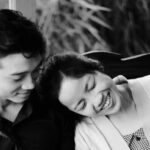
If you’ve ever wanted to learn more about Korean Buddhism, there are more resources available in English now than ever before. In the past 50 or so years, Korean Seon Buddhists, scholars, and translators have made a concerted effort to offer Seon Buddhist teachings beyond Korea’s borders. This can make for some great reading.
(The Chinese character for “Seon” [禪] in “Seon Buddhism” is pronounced “Chán” in China, “Zen” in Japan, and “Thiền” in Vietnam.)
The four works by Seon Buddhists featured in this article distinguish themselves from popular contemporary literary genres such as the novel or the poetry collection in terms of both their content and the ways they should be read. They variously blend Buddhist tradition with philosophy, personal anecdotes, poetry, dialogs, psychology, sociology, and ethics into texts whose functions can resemble those of tenderhearted self-help books or dense theoretical treatises.
So, whether you’re looking to calm your thoughts, dive into modern Korean history, or provoke your mind, these books can show you how Korean Buddhism has engaged with the world and our experiences in both past tradition and present practice.
The Things You Can Only See When You Slow Down by Haemin Sunim (trans. Chi-Young Kim)
The author of The Things You Can Only See When You Slow Down, Haemin Sunim, is a Korean Buddhist monk who boasts over 1 million social media followers. In our fast-paced world of attention-grabbing social media, nonstop work, and isolated self-care, Haemin Sunim is a figure who speaks to a broad audience. He distills Buddhist principles and his own reflections to slow down our everyday thoughts and behaviors.
Haemin Sunim collects some of his insights in The Things You Can Only See When You Slow Down. This book is one to browse during quiet hours of reflection. It contains eight chapters divided by theme, covering rest, mindfulness, passion, relationships, love, life, the future, and spirituality.
The work is full of bite-size aphorisms and verses to flip through, contemplate, and revisit. Within each chapter, readers find a short introduction discussing the theme followed by bits of practical advice for achieving personal transformation, self-knowledge, and rest. Accompanying illustrations in the work also encourage quiet contemplation.
Generally, these nuggets of wisdom and advice encourage readers to observe and calibrate their ideals and expectations such that they’re not setting themselves up for failure, disappointment, or burnout. In addition to drawing from Buddhist tradition, Haemin Sunim’s sources of inspiration range from jazz improvisation to Mahatma Gandhi, from Confucian scholars to the Christian Bible.
The Things You Can Only See When You Slow Down was a #1 best seller in South Korea for 41 weeks, has been translated into 30 languages, and has sold more than three million copies. If you’re looking for a book to help you wind down and spend some quality time with yourself, this would be a great selection.
Reflections of a Zen Buddhist Nun by Zen Master Kim Iryŏp (trans. Jin Y. Park)
Kim Iryŏp (1896–1971) was a pioneering feminist and Buddhist thinker of Korean modernity, identity, and liberation, and she explored the ideas of freedom and subjectivity in two distinct periods of her life. Born in 1896, she studied in Japan before returning to Korea to publish the journal New Woman in 1920. This was the first women-run magazine dedicated to women’s liberation in Korea, and Kim Iryŏp wrote actively as a public feminist literary figure during this period of her life. It then came as a surprise to the public when Kim Iryŏp was ordained as a Buddhist nun in 1933.
As Hwansoo Kim explains in his review of Reflections of a Zen Buddhist Nun, the work was originally published in 1960 to immense popularity in Korea, at least partially owing to Kim Iryŏp’s past reputation as a feminist literary figure. It marked her return to the literary world, but now she was a Buddhist nun.
In the work, Kim Iryŏp leans into her past life rather than away from it as she intertwines personal anecdotes with Buddhist teachings. The anecdotes revisit her childhood as a Methodist pastor’s daughter, her life as a feminist writer, and her engagements with other Buddhist clergies. A large portion of the text is devoted to Kim Iryŏp’s addresses to past friends, lovers, and mentors, and she recounts stories of betrayal, disappointment, and heartbreak. Throughout, Kim Iryŏp relates these experiences to Buddhist lessons.
As philosopher and translator Jin Y. Park argues, Kim Iryŏp’s work represents a challenge to the dominant gender-blind discourse on the modernization of Korean Buddhism. For readers interested in a thinker who not only puzzled over how to integrate the disparate parts of the self but also developed the sparse Buddhist discourse on love, Kim Iryŏp’s Reflections of a Zen Buddhist Nun would be a fascinating read.
My Heart is a Golden Buddha by Seon Master Daehaeng
In My Heart is a Golden Buddha, Daehaeng Kun Sunim (1927–2012) curates and glosses thirty-three stories drawn from Korean Buddhist narrative tradition.
The stories in the work function as short parables that engage people of different social identities as they encounter personal, social, and moral dilemmas. Characters include classical Korean types like nuns, monks, wives, husbands, parents, children, scholars, and tradespeople. The stories show how these characters choose to think and act given their unique life circumstances, and each story is followed by a concise explication that interprets the characters and their choices through the lens of Buddhist discourse.
Some of Daehaeng Kun Sunim’s exegetic readings seem like fairly straightforward Buddhist allegories, but others are more subtle subversions of dualistic understandings of agency and morality. Many of the narratives draw out the ironic crevasses that separate the external appearances of our actions from the inner intentions of our hearts. Following this thread, readers may be surprised to find that trickery and deception are oft-recurring themes.
These stories are short and easily digestible. They have been honed to target precise psychological and social issues over the course of Daehaeng Kun Sunim’s forty years of Dharma talks. For readers interested in Korean Buddhist stories, Daehaeng Kun Sunim’s work provides English speakers with access to many Buddhist tales presented in Korean cultural settings that, as she argues in the work, apply to issues that cross cultural and temporal boundaries.
Dropping Ashes on the Buddha by Zen Master Seung Sahn, edited by Stephen Mitchell
Zen Master Seung Sahn (1927–2004) has been recognized as the first Korean Seon Buddhist to teach in the West, and in Dropping Ashes on the Buddha, selections from his thoughts, words, and lessons are collected in book form.
The text contains 100 very short chapters. These variously deploy dialogues, stories, Zen interviews, Dharma talks, and letters as Seung Sahn Sunim attempts to make Korean Buddhist teachings accessible and approachable for an American audience unfamiliar with Seon Buddhism.
The metaphors that Seung Sahn Sunim relies upon to engage his interlocutors are drawn from everyday American life, and he frequently relies upon humor, paradox, and irreverence to make his points. The very title of the work comes from a provocative riddle of sorts: “Somebody comes into the Zen Center with a lighted cigarette, walks up to the Buddha-statue, blows smoke in its face and drops ashes on its lap. You are standing there. What can you do?” The question invites the reader’s ethical contemplation.
Though Seung Sahn Sunim adapts Seon Buddhism to an American context through culturally legible situations like these, he also makes full use of classical Zen Buddhist rhetoric. Readers will also encounter Seung Sahn Sunim as he shouts, smacks tables, resorts to silence, and responds to questions with opaque, nonsequitous rejoinders.
For readers unfamiliar with Zen rhetoric, these jarring and confounding uses of language might come as a shock. For readers who can stick with it and would like to see how Zen Master Seung Sahn adapted Korean Buddhism for American audiences, Dropping Ashes on the Buddha has plenty of material to explore.















